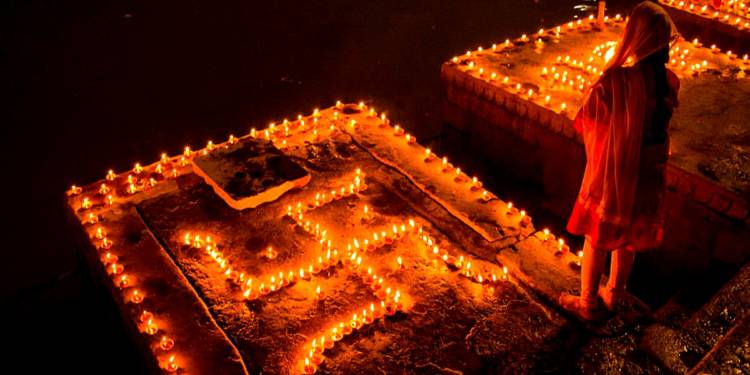In this article, we will pose some very important questions, but before we get to that we must first understand the various dimensions in this story.
Pre-Christianity Europe
People have lived in communities in Europe long before the invention of Christianity. Archaeologists have discovered several artefacts which suggest these communities had organised belief systems, deities, rituals and symbols. It is the symbols and in particular, one symbol which is the topic of this article. Throughout Europe, archaeologists have found a symbol which looks like the mathematical plus sign with “hooks” protruding at the ends of the lines. Hence they labelled it “hooked cross”. We do not know what they who assigned meaning to the symbol had called it; so the archaeologists must have given it a descriptive name.
Christians’ use of the symbol
The symbol became so widespread in Europe that European Christians adopted it as a version of the Christian cross, the symbol of Christ’s victory over death. This hooked cross became so accepted in the Christian tradition, that it was even incorporated in the art and architecture of religious buildings, such as the Lambach Abbey in Austria.
The symbol in most of Europe was known as the “hooked cross.” However, there was one exception-England.
Creation of an imaginary “super race”
The discovery of the “hooked cross” by archaeologists sparked the imagination of European academics, that were tasked with creating propaganda material to aid Imperialism. Namely, Max Muller was tasked with conjuring up a narrative that would enable imperial forces to justify their quest for domination over the Indian subcontinent.
Being a linguist, Muller saw similarities in some words in European languages and theorised that they all had one common origin spoken by a “super race”, he called them “the Aryans” (a label he borrows from civilisations in the East). He imagined that they imagined lived thousands of years ago and eventually ended up in the Indian subcontinent. The theory assumes it was the Aryans that built ancient civilisations in the East (e.g. the Indus Valley Civilisation) and not the indigenous population. The theory is controversial and heavily disputed; there are suggestions that it is based on outdated supremacist bigotry which assumes any cultural achievement of significance in the Orient or New World must have a Western origin.
The English used this idea of the imaginary “super race” and took the giant leap of assuming the symbol widely used in the Indian subcontinent same as the one found by archaeologists in Europe – a terrible error. An error of such epic proportions that those that revere the symbol in the East are still paying the price to this day. English-speaking academics mislabelled the European “hooked cross” (despite almost every Continental European country calling it so in their languages) and instead labelled it as the “Swastika”.
A revered symbol in the East
The above sequence of events makes the descendants of civilisations in the East very uncomfortable. In the East, the Swastika has been in continuous use for thousands of years. It has a positive sacred meaning for the billion-plus Hindus as well as Jains, Sikhs and Buddhists. It is as important to them as the crucifix is to the Christians.
In the 21st century, those who have revered the Swastika for generations spanning millennia are being asked to give up on their sacred symbol because the English made a mistake in labelling a line formation. There was no need to use a Sanskrit term to label a line formation dating back to pre Christianity Europe. There is no strong evidence to suggest that the Indian symbol has any relation to the European one, other than simple coincidence.
The attentive reader must be wondering – so what are the questions? The questions are simple – should those that revere the Swastika as a deeply religious and spiritual symbol be made to give it up? Should they pay the price for the mislabelling done by Imperial forces with dubious motivations? Should they still be paying the price for centuries of imperialism they have endured?


































